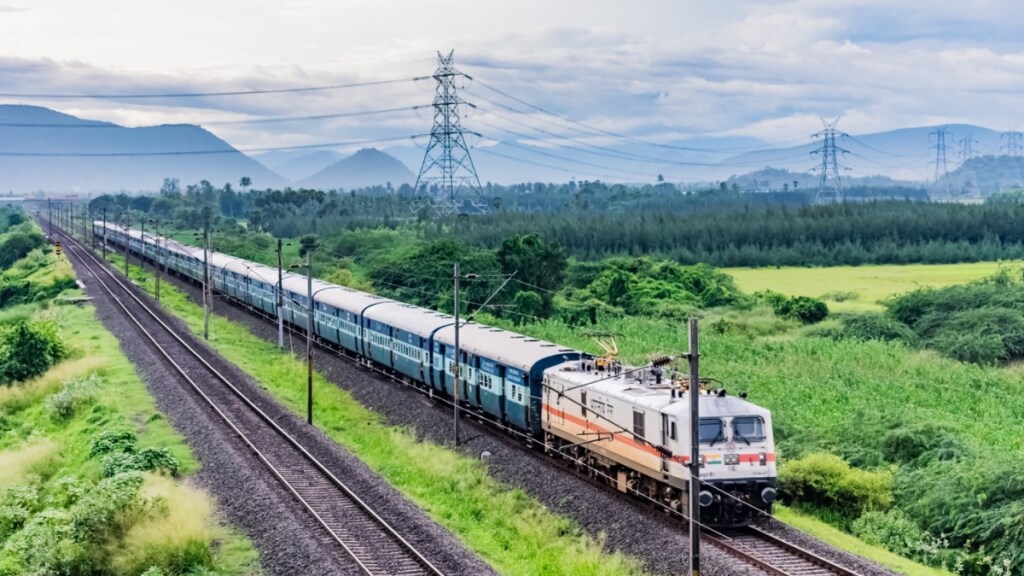Union Minister of Railways Ashwini Vaishnaw, recently unveiled three significant railway infrastructure projects approved by the Cabinet Committee on Economic Affairs (CCEA). These projects, aimed at enhancing connectivity and driving economic growth, focus on improving infrastructure in Maharashtra, Madhya Pradesh, and Uttar Pradesh. The Minister provided detailed insights into these projects, underlining their socio-economic and environmental benefits.
Key Railway Projects
The approved projects include the construction of 375 km of multi-tracking lines:
- Jalgaon-Manmad 4th Line (160 km)
- Bhusawal-Khandwa 3rd & 4th Lines (131 km)
- Prayagraj (Iradatganj)-Manikpur 3rd Line (84 km)
These projects aim to improve connectivity between Mumbai and Prayagraj while facilitating smoother passenger and freight train operations. The enhanced infrastructure will significantly benefit the Khandesh region of North Maharashtra and the Purvanchal region of Uttar Pradesh, spurring industrial growth and easing the movement of agricultural and industrial goods.
Strategic Importance
The projects form part of a larger strategy to enhance container movement between Purvanchal and Mumbai, including hubs like Varanasi. Surveys extending to Varanasi were conducted to align the corridor with emerging industrial needs. The upgraded network will act as a feeder section for the Eastern Dedicated Freight Corridor (EDFC), decongesting urban centres and key railway stations.
The connectivity improvements will also bolster access to Jawaharlal Nehru Port and the upcoming Vadhwan Port, facilitating seamless logistics. Enhanced freight capacity will benefit industries, reducing costs and improving export competitiveness.
Environmental and Economic Benefits
Minister Vaishnaw emphasised the sustainability aspects of these projects:
- Reduction of 271 crore kilograms of CO2 emissions, equivalent to planting 15 crore trees.
- Annual savings of 15 crore litres of diesel.
- Incremental loading capacity of 50 million tons of cargo annually.
The total investment for the projects stands at Rs 7,927 crore, with completion targeted within four years.
Boost to Religious Tourism and Pilgrimage
Improved railway capacity will benefit pilgrims travelling to Jyotirlingas in Nashik (Trimbakeshwar), Khandwa (Omkareshwar), and Varanasi (Kashi Vishwanath), as well as destinations like Prayagraj, Chitrakoot, Gaya, and Shirdi. Enhanced access to UNESCO World Heritage Sites such as the Ajanta and Ellora Caves and Khajuraho will further promote tourism.
Farmer-Friendly Innovations: Shetkari Samridhi Rail
Highlighting the success of the Shetkari Samridhi Rail, Vaishnaw noted its 200 per cent occupancy since launch. Designed with inputs from farmers in Nashik, the train features 10 passenger coaches and 10 dedicated to agricultural produce, offering flexible solutions for small-scale farmers to transport goods. The initiative is a model for replicating farmer-friendly transportation solutions nationwide.
Advancements in Safety: Kavach Technology
Vaishanaw also discussed the deployment of Kavach Version 4.0, an advanced safety and operational efficiency system. This upgrade builds on Version 3.2, which has been implemented across 1,600 km. Kavach 4.0 features:
- Installation across 10,000 locomotives.
- Certified operational sections, such as Sawai Madhopur-Kota and ongoing routes including Delhi-Mathura and Mumbai-Vadodara.
- Nationwide implementation within six years, a timeline significantly shorter than global benchmarks.
Kavach technology enhances Automatic Train Protection (ATP), enabling high-speed operations and ensuring rail safety.
The Union Government’s railway projects represent a multi-dimensional approach to enhancing connectivity, sustainability, and safety. By integrating advanced technologies like Kavach and promoting farmer-friendly initiatives, the Railways is poised to catalyse economic development and climate goals while transforming the logistics and transportation landscape in India. These projects will not only connect key regions but also bolster industrial growth, tourism, and cultural heritage, making them a landmark achievement in India’s infrastructure development journey.

